Toaster Engineering
advertisement
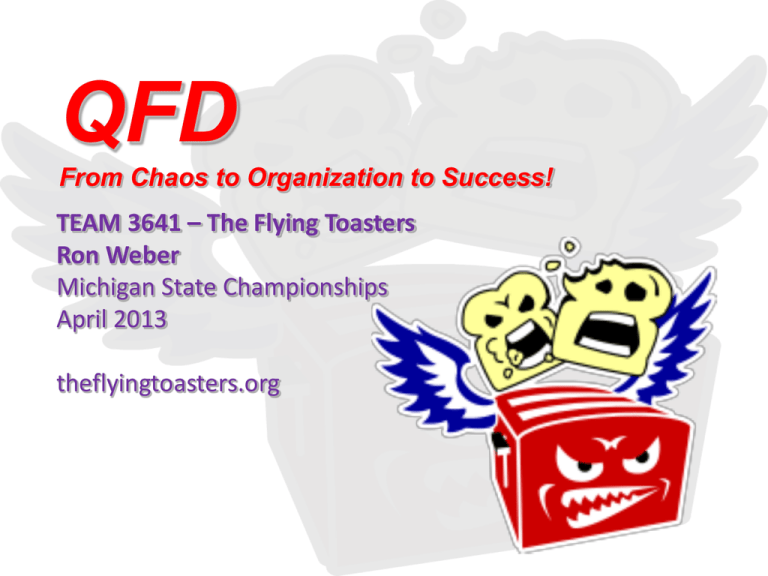
QFD From Chaos to Organization to Success! TEAM 3641 – The Flying Toasters Ron Weber Michigan State Championships April 2013 theflyingtoasters.org How to make better Toast: Toaster Engineering TEAM 3641 – The Flying Toasters Ron Weber May 2012 theflyingtoasters.org Sources • “Tops Shops” – Robert Wilson & John Linscott • “How Useful is QFD?” – John L Sanford – Thunderhawks – Team 1038 • Special Thanks to – Ed Debler • Thunder Chickens – Team 217 • The Flying Toasters – Team 3641 3 - Introduction / Agenda Topics • Systems Engineering • Toaster Design Process: – QFD (Quality Function Deployment) • Q&A 5 - Introduction / Agenda Systems Engineering • • How do you accomplish the following? Where do you start? The Internet Systems Engineering How do you accomplish the following? Where do you start? Systems Engineering • Systems engineering is the branch of engineering concerned with the development of large and complex systems, where a systems is understood to be an assembly of combination of interrelated elements of parts working together toward a common objective. -University College London Systems Engineering Verification System Design Easy to fix Preliminary Design Design Process Critical Design Fabrication Problems Hard to fix Think and plan BEFORE you act! Integration & Testing Rookie Year 2010… 1. 2. 3. 4. 5. Know the rules Make mistakes faster Need everyone working together on the same page Trust, but verify If we knew what we were doing, we wouldn’t be here. Failure to plan is planning to fail! Is QFD the Answer? 1 Is QFD the Answer? 1 Objective: Make sure the solution chosen will best accomplish what the QFD says as important Is QFD the Answer? 1 Objective: Make sure the solution chosen will best accomplish what the QFD says as important Toaster Design Process (QFD) Quality Function Deployment A scientific method to integrate design and strategy Pioneered by Yoji Akao at Mitsubishi WHAT HOW Relationship between WHAT & HOW Strategic Importance Ranked (least) 1-5 (most) Difficulty rating: Impact vs Effort Objective: Take the guess work out by assigning values in an organized fashion. Toaster Design Process 1. 2. 3. 4. 5. 6. 7. 8. 9. Watch the Kickoff Video (fill out worksheets) Read and Understand the Rules (fill out worksheets) Simulate the Game (fill out worksheets) Determine Strategic Importance (Scoring Opportunities & Necessary Attributes) Brainstorm Robot Capabilities and Features Determine Strategic (Scoring Opportunities & Necessary Attributes) vs Capabilities and Features Relationship-QFD Determine Importance of Design Features Brainstorm Whole Robot Concept Check Robot solutions against QFD Failure to plan is planning to fail! Toaster Design Process 1. Watch the Kickoff Video – – – – – – – How many ways can you score? How many teams are playing? How big is the field? What objects are on the field? What are the penalties? What did they say you can’t do? Use the Kickoff Worksheet. Objective: Have a basic understanding of the game. Toaster Design Process 2. Read and Understand the Rules – Read the rules aloud • “Read” what the rules don’t say – Discuss the rules – Analyze the game • Create a list of scoring differential opportunities – Defense is a ‘scoring’ opportunity – Fill out the Kickoff worksheet Objective: Create a list of scoring opportunities. Toaster Design Process 3. Simulate the Game – Use robot analogues (you!) • Play the game with humans acting it out on full size area – Make it realistic • Limit motion and shorten match times – Be creative and test out different strategies – Add more to Kickoff worksheets Objective: Dynamically test the game and it’s nuances Toaster Design Process 4. Determine Strategic Importance – WHAT do you want to do? NOT HOW! – WHAT are the Scoring Opportunities? • (Both Explicit and Implicit) – WHAT are the Necessary Attributes? • (Both Explicit and Implicit) – Obtain unanimous support or consensus – Assign strategic importance • Scale 1 to 5 (1 = low; 5 = high) Objective: Assign strategic importance to scoring opportunities. Toaster Design Process 5. Brainstorm Robot Capabilities and Features – What must your robot do to score points? • • • • • What must it push? Pull? How fast should it go? What should it manipulate? How high does it need to reach? Autonomous modes? – Don’t get too detailed just yet….Stay General Objective: Create a list of possible features that could work for all scoring opportunities: such as autonomous, drive, drive speed, etc. Toaster Design Process –Enter QFD (QFD) Quality Function Deployment A scientific method to integrate design and strategy Pioneered by Yoji Akao at Mitsubishi WHAT HOW Relationship between WHAT & HOW Strategic Importance Ranked (least) 1-5 (most) Difficulty rating: Impact vs Effort Objective: Take the guess work out by assigning values in an organized fashion. Toaster Design Process – Enter QFD 6a. Determine Strategic vs Design Feature Some features work better with different strategies Assign a value into the matrix Blank = no relationship 1 = weak relationship 5 = medium relationship 9 = strong relationship Objective: Fill up the QFD Matrix. Be concise, Be honest, Be analytical. Toaster Design Process 6b. Difficulty Rating: Impact vs. Effort – – Rank the impact the item/task will have against the amount of effort it will take to accomplish the item/task. Example: If it takes you very little effort but you get a big impact on the robot, then it scores a 5. Hint: In Nature, energy follows the path of least resistance. You want your successes to take the least amount of effort. Toaster Design Process 7. Determine Absolute Importance of Robot Capabilities & Features The sum of the relationship score * strategic importance Objective: Calculate the importance of the design features and prioritize. Toaster Design Process-Final QFD QFD • Critical WHATs & HOWs in yellow Objective: Visually see what is important so that you know what a successful solution/design must accomplish. Toaster Design Process 8. Brainstorm Whole Robot Concept – – – – Everyone presents Create cartoon concept drawings Discuss various mechanisms Roughly allocate motors Objective: Create a cartoon sketch of what the robot will look like Toaster Design Process 9. Check robot solutions against QFD – Assess/evaluate each solution against every category in QFD – Rank on 1-5(best) scale – See if you can combine top solutions to make even better solutions Objective: Make sure the solution chosen will best accomplish what the QFD says as important Questions & Answers

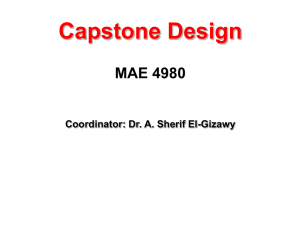
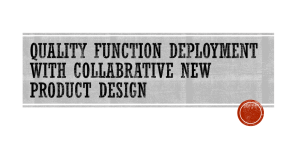
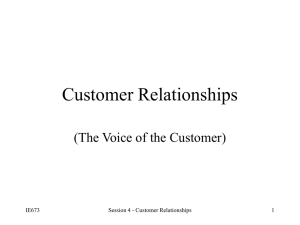
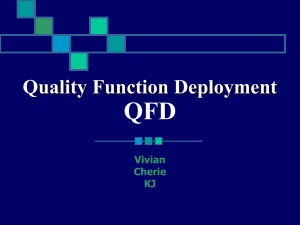
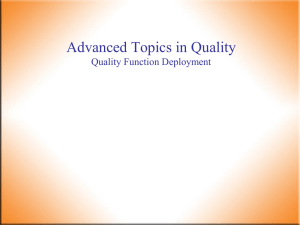

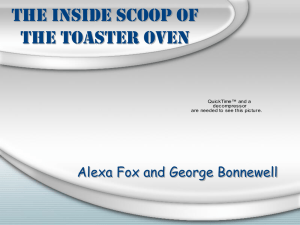


![Electrical Safety[]](http://s2.studylib.net/store/data/005402709_1-78da758a33a77d446a45dc5dd76faacd-300x300.png)
